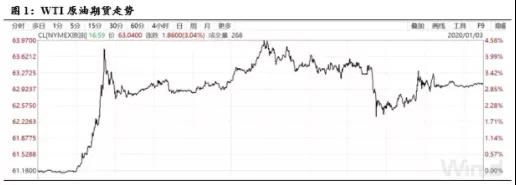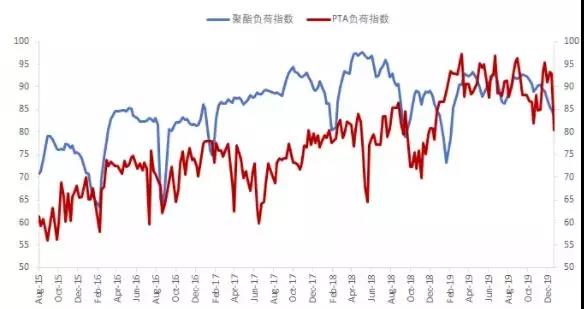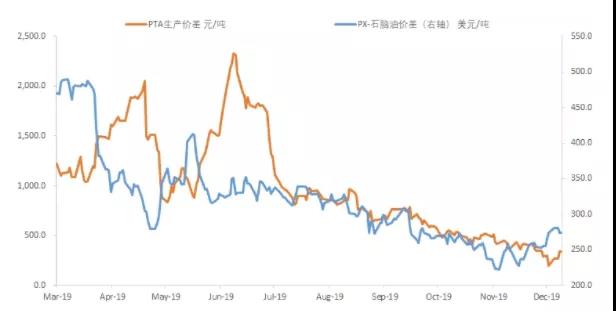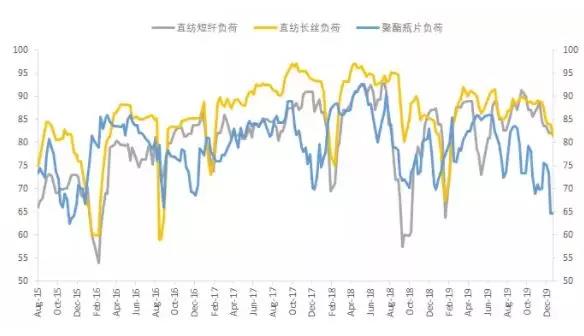Just after 2019, the risk of geopolitical conflict in the crude oil world has ushered in a climax at the beginning of the new year. In the early hours of January 3, the U.S. military launched an air strike on two target people associated with Iran.

Last Friday and throughout the weekend, the US and Iran were hot spots in the market. After the US decapitation of Iran on Friday, crude oil and gold rose sharply. Crude oil prices opened sharply higher in the early trading. The highest oil prices in the three major regions of Brent, WTI, and SC reached more than 4%! Geo conflict stands at the C position again!

With the rise of crude oil, it is the commodities in the entire energy sector. For example, PTA, ethylene glycol and other crude oil downstream products. Boosted by the soaring crude oil, PTA futures stopped falling and rebounded on Friday, and quickly rose after the opening on the 6th, standing at a high of 5,100 points. Also as a polyester raw material, the ethylene glycol market has also climbed under the boost of crude oil. At the opening on the 6th, the main contract for the ethylene glycol futures of Dashang Exchange rose directly by 100 points.
At the same time, stimulated by the rising international oil prices and rising polyester raw materials, polyester filament production and sales also ushered in over 100 production and sales.
At the beginning of the new year, due to the geopolitical crisis, polyester raw materials ushered in a wave of rebound. So for PTA, how long can this wave of rebound continue during the stocking boom before the holiday?
1. After the geopolitical event, there is a high probability that oil prices will rise in the short term, but subsequent development remains to be seen.
Since the United States unilaterally torn the Iranian nuclear agreement in 2018, economic sanctions have been imposed on Iran several times, blocking Iranian crude oil exports, which has led to a downward trend in Iranian crude oil production and crude oil exports have dropped to near zero. According to Bloomberg data, Iran ’s output in December fell to 2.08 million barrels per day.
And traditional Iranian crude oil importing countries like China and India have also reduced Iranian crude oil imports to zero. Iranian crude oil exports in December were only 129,000 barrels per day. At present, Iranian crude oil production mainly supplies domestic demand.

On the whole, there is a high probability that oil prices will rise to varying degrees in the short term after geopolitical events. From the perspective of the impact of the incident, with the exception of the Saudi oilfield attack, other geological events did not have a substantial impact on crude oil production or subsequent development. The impact of the incident was quickly forgotten and digested by the market. From the current news, the attack did not have any impact on Iranian crude oil production.

The incident has escalated tensions between the United States and Iran, and Iran has vowed to retaliate against the United States. But US President Trump said on the 3rd that the killing was not to provoke conflict with Iran, and to take action to stop a war. It can be seen from the speech of President Trump that the United States does not want to go to war with Iran.
Earlier, Iran shot down U.S. drones. President Trump had originally approved a military strike at dawn on the 21st of Iranian local time in retaliation for Iran ’s shooting down of U.S. drones, but eventually retracted the order. Recently, the U.S. embassy in Baghdad was attacked. The U.S. identified it as Iran and threatened to retaliate against Iran. The "scheduled removal" of Suleimani was the United States' retaliatory action. Go to war.
However, developments still depend on Iran ’s attitude. Iran ’s supreme leader, Khamenei, vowed on the 3rd to “severely retaliate” against U.S. military operations. The New York Times quoted analysis by senior US cyber security officials and security experts that Iran ’s "Retaliation measures" may include cyber attacks. Iranian hackers could use malware to cause significant damage to the U.S. public and private sectors. Potential targets include manufacturing facilities, oil and gas plants, and transportation systems.
The United States is currently engaged in a global trade war, and the Sino-US game is one of the most important. Now that economic sanctions and military containment of Iran can be used to achieve the U.S. goals, a full-scale military use of Iran is not imminent, and this year's US presidential election requires more energy to deal with. To sum up, the United States and Iran will not have a full-scale war in the short term, but small friction may be inevitable.
From the above analysis, three possibilities are extracted:
1. If there is no follow-up development of the incident, it will soon be forgotten and digested by the market. Some of the gains guided by the incident may be repaired later, but from the Iranian attitude, it may not be so simple;
2. Iran fulfilled its promise, and the U.S. military action retaliated, but only on a small scale, with some small frictions. Similar pulse-like prices will still occur in the subsequent oil prices. From the recent conflict-prone situation, the probability of such a situation is relatively high. Big;
3. There is a full-scale war between the United States and Iran. Iranian crude oil production may be stagnant and oil prices may continue to rise. However, countries such as Saudi Arabia and Russia are in a state of reduced production. From the current Iranian production situation, the major oil-producing countries Ability to make up for the supply gap, it is also difficult to reproduce the past hundred yuan oil price.
The fourth phase of Hengli Petrochemical Project and the entire process of Zhejiang Petrochemical opened up negative pressure and suppressed the foundation of rising PTA.
From the perspective of the polyester industry chain, the recent PTA starts have fallen sharply, and equipment maintenance has increased. However, as the polyester load continues to fall, the pressure of PTA accumulation still exists, and the price shocks have weakened. It was also driven by Friday's events.

In addition, due to the strong trend of raw materials at the beginning of this week, in particular, the warming atmosphere of the PX window to promote the sharp rise of raw materials, further expanding the loss pressure of PTA plants. Driven by cost, the PTA period is now volatile.
However, as the fourth phase of Hengli Petrochemical has entered the testing phase, the planned launch of new capacity will give the market some negative pressure; in addition, the opening of the entire process of the Zhejiang Petrochemical project will also suppress the market from the cost side, under the background of the weakening trend of PTA supply and demand and the weakening of costs Futures prices fell sharply.

From the perspective of PX, with the repair of the PX-naphtha spread, the operating rate of PX has picked up. At the same time, the 2 million tons of PX units in Zhejiang Petrochemical's 4 million tons of PX units have been completed in mid-December 2019 and normal production. Another 2 million tons of PX units are also scheduled to start in mid-to-late January. It is expected that PX will face some repression in the future. At the same time reduce the cost support for PTA.

From the perspective of PTA itself, although the number of equipment overhauls will increase in the short term and the operating rate will decline, it is expected that the supply of PTA in January this year will remain at a high level as new equipment comes online. On the demand side, with the approach of the Spring Festival, polyester production is increasing, and demand is expected to decrease. From the perspective of market transactions, in addition to just replenishment, the market's trading atmosphere is weak, so it is. In the short term, if the cost support is weakened, the price of PTA will fluctuate weakly.
Of course, the market needs to pay attention to the following risk points. First, although the Spring Festival holiday is approaching, the current inventory of the polyester market is low. Whether companies will postpone production cuts and postponed production cuts still needs to be closely monitored. Second, there are still two aspects of the new capacity of PTA in the first quarter that require further observation, including whether the new unit can be put into production on schedule and whether the unit load can quickly reach a higher level after being put into production. The third is whether OPEC will continue to deepen the reduction of crude oil production, and at the same time, be alert to extreme events that affect the market. For example, in the current US-Iraq conflict, it is unknown how things will develop in the future. We must be alert to the occurrence of such black swan incidents, which will lead to rising oil prices and affect the price of the chemical fiber industry chain.
http://www.get-recycling.com/>
http://www.get-recycling.com/solutions_show.asp?id=8>

